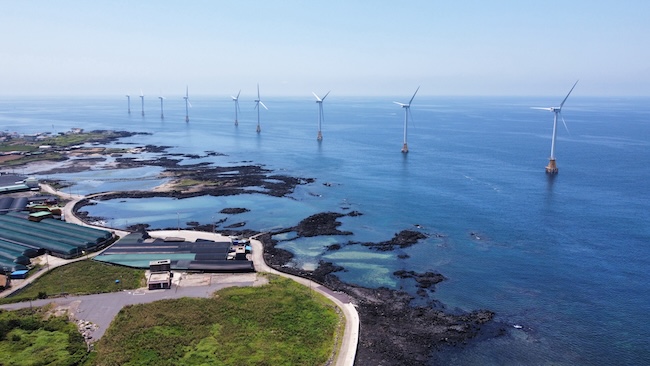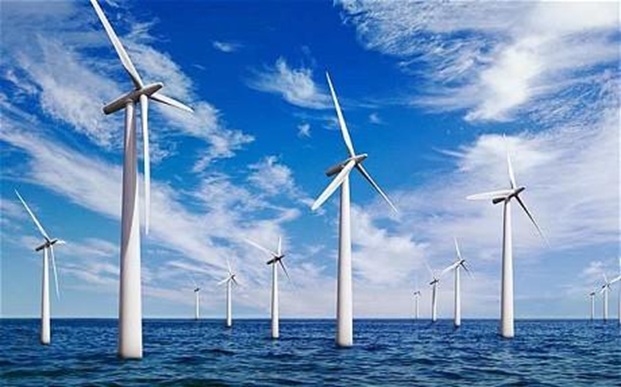SEJONG, June 20 (Korea Bizwire) — The administration of President Lee Jae-myung is accelerating plans for a nationwide renewable energy infrastructure overhaul, with a transformative “Energy Highway” at the center of its strategy to upgrade Korea’s industrial base and compete in the global clean energy transition.
In a briefing to the National Planning Commission on Thursday, the Ministry of Trade, Industry and Energy unveiled a detailed roadmap to construct the West Coast High-Voltage Direct Current (HVDC) transmission network — likened to a “second Gyeongbu Expressway” for its potential to reshape the nation’s industrial and energy landscape.
This network aims to deliver wind and solar energy generated in Korea’s southwestern regions to high-demand areas in the Seoul metropolitan region by 2030.
The 620-kilometer HVDC network, with a transmission capacity of 8 gigawatts, will be led by state-run Korea Electric Power Corp. (KEPCO). The total cost is projected at 7.9 trillion won. Originally scheduled for completion in 2036, the timeline has been advanced, with the first segment now slated for operation in 2031.
This effort forms a key pillar of President Lee’s campaign pledge to modernize Korean industry through a shift toward renewable energy. The plan also includes scaling up offshore wind capacity, accelerating the development of RE100 industrial complexes, and integrating energy storage systems to support the expanded renewable supply.
Renewable Push to Counter Global Climate Shift
The urgency is driven by concerns that Korean companies may fall behind global decarbonization trends, particularly as multinational clients like Apple demand 100% renewable energy compliance (RE100) from suppliers.
To address this, the government plans to establish designated RE100 zones, including a semiconductor-focused cluster in southeastern Gyeonggi Province and an expedited rollout of the Jeonnam RE100 complex.
RE100 industrial parks will enable companies to engage in virtual power purchase agreements (PPAs) and operate under policies favoring onsite renewable installations, according to the ministry’s report. These zones aim to enhance the global competitiveness of Korean exports while fostering regional development.
Offshore wind energy, with its scalability and reduced land-use conflicts, is emerging as a core growth engine. The government reaffirmed its goal of deploying 14GW of offshore wind capacity by 2030, alongside investments in grid infrastructure, public-private wind supply chains, and benefit-sharing schemes with local communities to improve project acceptance.

An undated file photo of a wind power plant on the southern island of Jeju (Image courtesy of Yonhap)
A Multi-Trillion-Won Green Market on the Horizon
To meet targets outlined in the 11th Basic Plan for Electricity Supply and Demand, Korea must quadruple its installed renewable energy capacity from 30GW in 2023 to 121.9GW by 2038. This expansion will require an estimated 91GW in new solar and wind facilities, translating into hundreds of trillions of won in public and private investment.
Energy storage will play a crucial role in supporting the intermittency of renewables. The government estimates that 23GW of new energy storage systems (ESS) will be needed by 2038, requiring an additional 40 trillion won in investment.
Pragmatism Over Ideology: Renewables and Nuclear to Coexist
While the Lee administration is placing heavy emphasis on renewable energy, it is not abandoning nuclear power. Marking a departure from the polarized energy debates of past administrations, the current government is pursuing what it calls a “rational energy mix,” promoting coexistence between renewables and nuclear.
“We are seeing consensus emerge around the coexistence of nuclear and renewables,” a senior ministry official told Yonhap News. “We are working closely with the new government to implement this direction with detailed execution plans.”
The industrial upgrade strategy comes at a critical juncture as South Korea navigates a global energy transition, renewed industrial competition with China, and deeper economic ties with the United States under the second Trump administration.
President Lee’s plan represents a bid not only to future-proof Korean industry but also to reimagine the country’s energy and economic geography for decades to come.
M. H. Lee (mhlee@koreabizwire.com)







